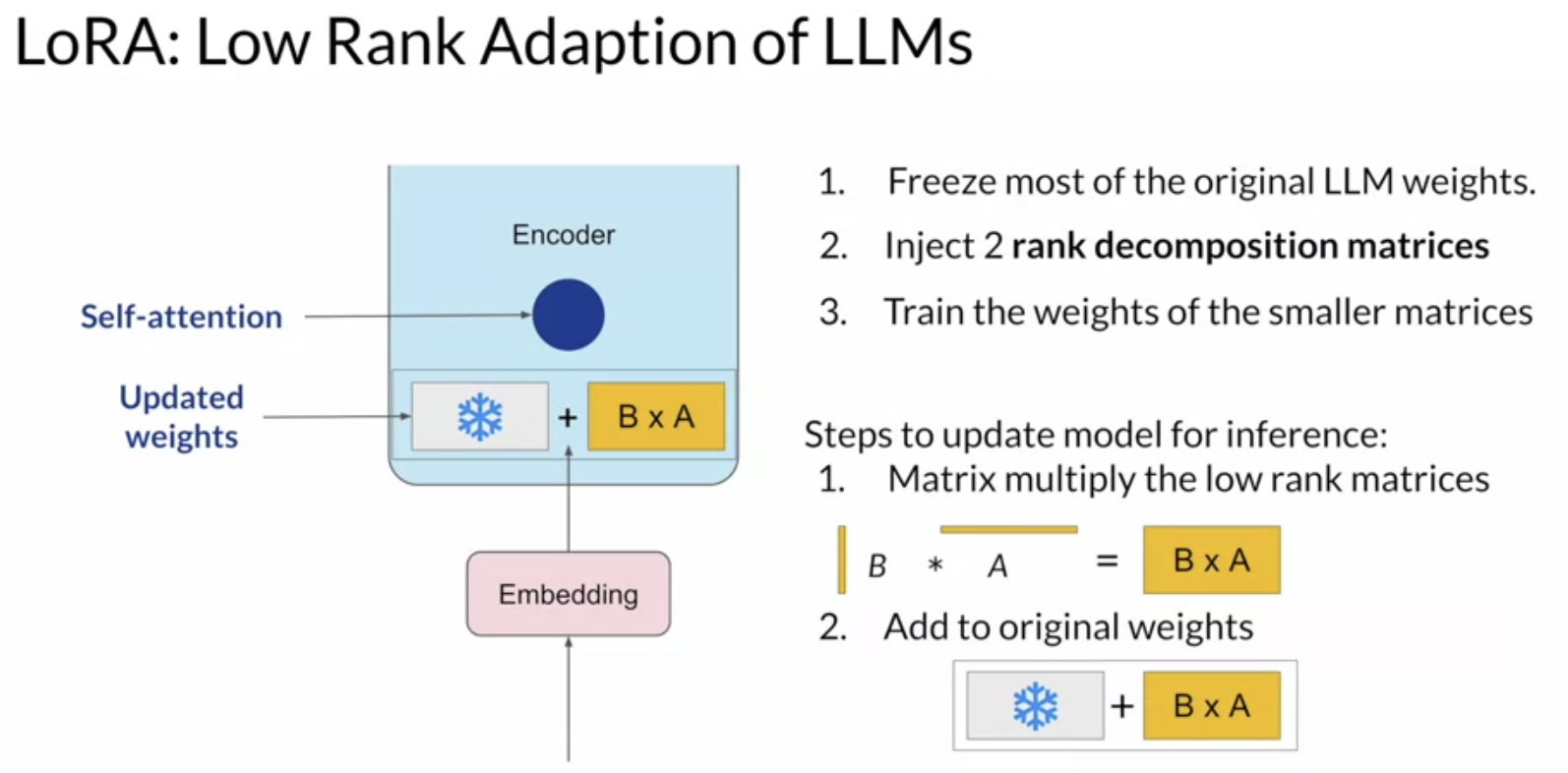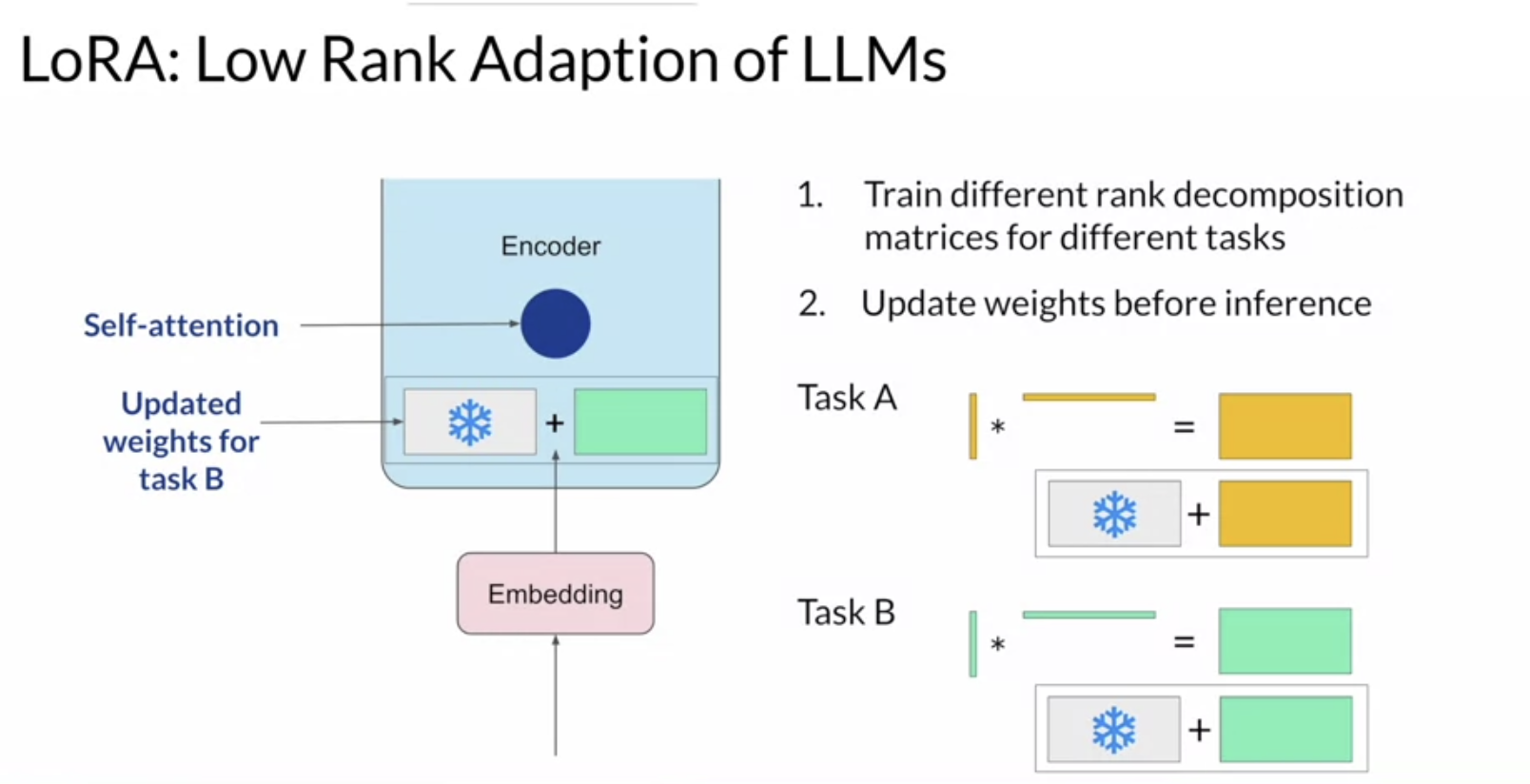LLM Fine-tuning
what is fine-tuning
- it's a supervised learning process where labeled examples are used to update the weights of the LLM
why LLM needs fine-tuning
- in-context learning is not enough
- it may not work for smaller models
- examples take up space in the context window
Types of LLM fine-tuning
Full fine-tuning
- The entire model, including all layers and parameters, is fine-tuned on a new dataset
LLM instruction fine-tuning
- fine-tuning on a labeled dataset of instructional prompts and corresponding outputs
- thus it improves the performance and adaptability of a pre-trained language model for specific tasks
- it can be multi-task: multi-task instruction fine-tuning
Parameter efficient fine-tuning (PEFT)
- why need PEFT
- full fine-tuning of large LLM is computationally intensive
- how does PEFT works
- it updates only a small subset of parameters, while most LLM weights are kept frozen
- benefits of PEFT:
- it saves space because it only saves newly upated weights for each task (while full fine-tuning saves full LLM for each task)
- it is less prone to catastrophic forgetting problem than full fine-tuning
Catastrophic forgetting
- = a machine learning model forgets previously learned information as it learns new information
- it happens because fine-tuning can significantly increase the performance of a model on a specific task BUT can lead to reduction in ability on other tasks
- how to avoid it
- fine-tune on multiple tasks
- consider parameter efficient fine-tuning (PEFT)
PEFT techniques
- selective
- select subset of initial LLM parameters to fine-tune
- reparameterization
- reparameterize model weights using a low-rank representation
- LoRA = low-rank adaptation of LLMs


- LoRA = low-rank adaptation of LLMs
- reparameterize model weights using a low-rank representation
- additive
- add trainable layers or parameters to model
- methods
- adapters
- prompt tuning with soft-prompts
- note prompt tuning is different from Prompt Engineering
- how it works: prompt tuning adds trainable "soft prompt" to inputs
LLM evaluation
metrics
- ROUGE
- used for text summarization
- compares a summary to one or more reference summaries
- BLEU SCORE
- used for text translation
- compares to human-generated translations
- =avg(across range of n-gram sizes)
evaluation benchmarks
- GLUE, SuperGLUE
- massive multitask language understanding
- BIG-bench
- holistic evaluation of language models (HELM)